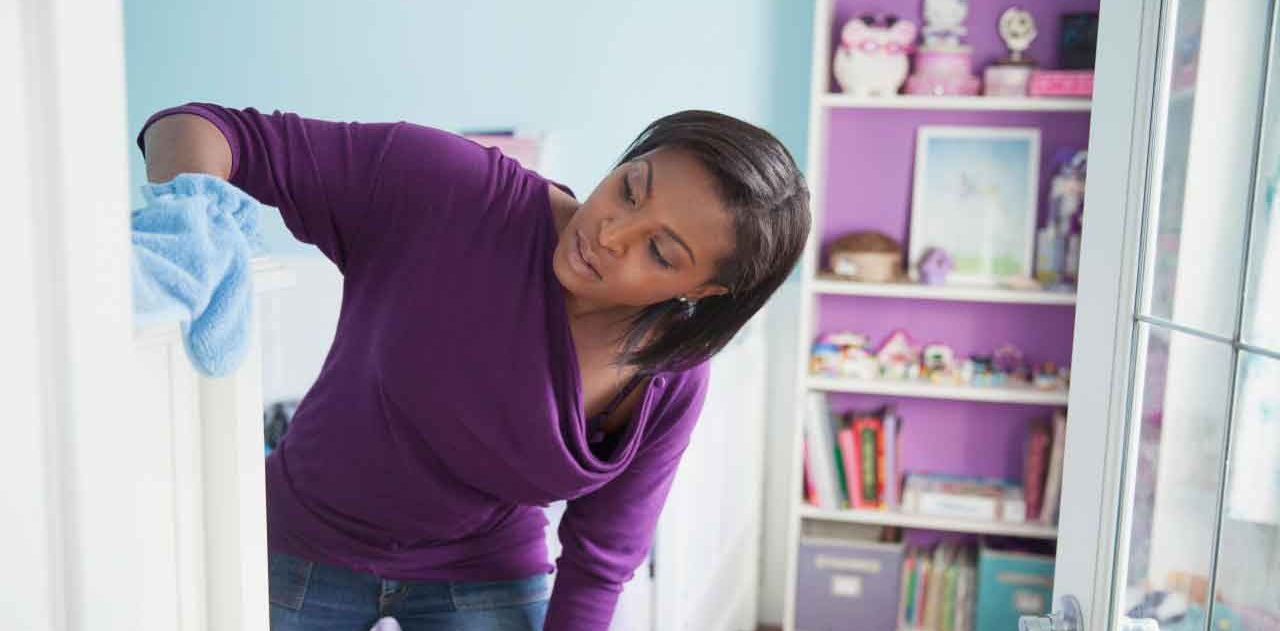Spring Clean to Keep Allergens Out of Your Home

While you rid your home of clutter, also clear the air of dust, mold, pet dander, and other substances that can make you sneeze.
Spring is here, and that means the time has arrived to rid your home of clutter. More than 70 percent of American households spring clean each year, according to a survey from the American Cleaning Institute. As you purge your closets and garage of the jeans you haven’t worn in a decade and the bicycle that’s too rusty to ride, also clear your home of the dust, pet dander, and other allergens that can make you sneeze.
“Allergy season can last all year for those sensitive to indoor allergens, but it can worsen in the spring months when pollen becomes an issue. It’s important to remove allergens from the home so you can lead a healthy and active lifestyle,” said allergist James Sublett, MD, past president of the American College of Allergy, Asthma & Immunology (ACAAI) and past chair of the ACAAI Indoor Environment Committee. “Thoroughly cleaning your home can help eliminate allergens and keep new ones from easily entering.”
Try these spring-cleaning tips to make your home allergen-free from top to bottom.
Suck it up. Dust and pet dander build up on fabrics like carpets, curtains, and bedding. A thorough vacuuming is one way to rid your home of these allergens, but using the right vacuum cleaner is important. Some vacuums simply stir up dust. Look for a model with a high-efficiency particulate air (HEPA) filter, which traps more than 99 percent of pollen, pet dander, and other tiny particles.
Go for a spin. Another way to rid your home of dust mites is by cleaning fabrics in hot water. Wash all fabrics – curtains, pillows, comforters, and throw rugs – every few weeks. If you can’t fit it in the washing machine, throw it out. That includes carpets. Hard wood floors are a better option for allergy sufferers because they’re less likely to collect dust.
Dust up. Stay away from feather dusters, which merely scatter dust into the air. Instead, clean surfaces with a damp, washable microfiber cloth that traps dust.
Scrub down. Mold flourishes in damp areas like basements and bathrooms. Look for the telltale black spots on ceilings that will alert you to a mold problem. Scrub down any moldy surfaces with a combination of water and detergent, then let dry. To prevent mold regrowth, use bathroom fans to dry out moist rooms during and after showers. And, keep the humidity in your home set below 60 percent.
Curb clutter. Old books, albums, and photos help you hold onto precious memories, but they’re also notorious dust collectors. If you can’t bear to part with these items, at least dust them off.
Green your cleaners. Many of the products you use to rid your home of allergens can irritate your symptoms even more. Harsh chemical cleaning products irritate your eyes, nose, throat, and lungs, and can set off an attack of wheezing in asthma sufferers. When you shop, look for all natural, chemical- and dye-free cleaning products.
Filter out. A home air filter can reduce the number of allergens in your home, but just as with any filter, you need to change it regularly. When you do swap in a new filter, make sure it has a minimum efficiency reporting (MERV) value of 11 or 12, which means it traps a higher percentage of particles. While you’re changing your home air filter, don’t forget to replace your vacuum, furnace, and air conditioner filters, too.
Set up border control. Once your house is allergen-free, you want to keep it that way. On days when the pollen count is high, keep windows closed and the air conditioner turned on. After you work or play outside, leave your shoes by the door. Change your clothes, and wash both them – and you. Also wash your pets if their fur is covered in pollen.
Updated:
March 29, 2016
Reviewed By:
Janet O’Dell, RN